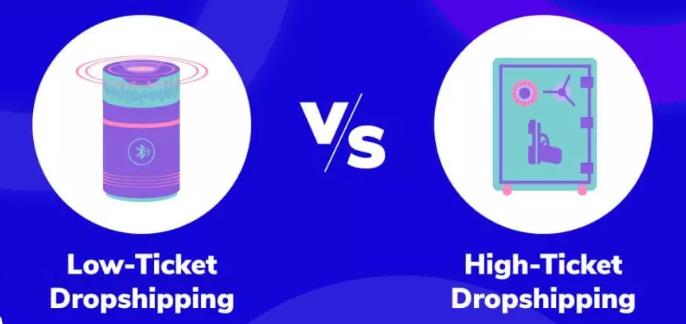The Ultimate Dropshipping Pricing Strategy for Your Products
- 19/09/2022
- HonestFulphilment
If you have an online dropshipping store, the question of pricing your products is definitely something you need to consider.
When you price your products, you have to take into account expenses such as product costs, marketing costs, and taxes. But don’t worry, in this article, you will be able to learn what is a dropshipping pricing strategy and how to choose the best retail price for your dropshipping products.
Now let’s get started!
What Is a Pricing Strategy and Why Is It Important?
A pricing strategy is a method used to determine the price of a product being sold. As one of the P’s of marketing, pricing is also considered a marketing strategy to predict the perception of a product or brand. Pricing strategy is important because, without it, you risk incurring losses on each order. Too high a product price will prevent people from speaking about the product to add to their shopping cart, and too low a product value will cost you a profit margin.
What Are the Different Pricing Strategies?

There is no single pricing strategy for dropshipping. In fact, there are many different pricing strategies, and the one you choose will determine how you price your products and how you market them to your audience.
Here are some of the most popular e-commerce pricing strategies.
Fixed Markup
The fixed markup is simple. You will calculate a fixed margin that you want to have on all your products. Let’s say you want a 20% markup on all products, and you have a product that costs $200. You would add $40 to the cost of that product and that is the price you would sell it for.
Tiered Markup
When you sell many different types of products, it is recommended that you use tiered markups. You can adjust your markup percentage based on the overall price of the item. This allows you to tailor your pricing strategy to meet the needs of each product individually.
For example, you may not want to add a 20% markup on a $500 product because that would add $100 to it, which would be bad for your competitors and your audience. But you can add a 50% markup on a $10 product to cover your costs. With a tiered markup strategy, you can set the percentage based on the retail price of the product.
MSRP (Manufacturer Suggested Retail Price)
MSRP is one of the safest options, with this pricing strategy you price your products based on their value while being free from competition. MSRP strategies can be paired with discounts to bring in customers by promoting your products and competing with sites that have the same products but at lower prices.
Competition-Based Pricing
Competition-based pricing is setting your price based on your competitors’ prices. This pricing strategy is generally not recommended because lower prices may translate into lower product quality in the minds of customers. A dropshipping business that thinks in terms of “beating your competition” will never thrive.
Psychological Pricing
Using prices that appeal to the human psyche has been a win-win situation for many resellers in the past. Using numbers like 0.99 and 1.99 is very appealing to customers. It is well known that playing with customer psychology in pricing can lead to more conversions than traditional methods of pricing strategy.
Free Plus Shipping
Free plus shipping means selling your product for “free” while adding shipping costs to cover your losses. We often see Facebook ads that say, “Just cover the shipping and you get your product for free. The purpose of free plus shipping is to get people to come to your store so you can cross and up-sell their other stuff.
Dropshipping Pricing Strategies

Low-ticket product ($0-$25) dropshipping pricing strategy
We’ll start with the low price point, where you’ll buy products from your supplier for $0 to $10. So, what factors do you consider when pricing a low-priced product?
Perceived value. Generally speaking, low-priced products will not have a very high perceived value. Having a margin of $20 or more is often quite tricky for low-priced products.
Audience. If you are selling a low-priced product, your goal should be to sell as much of the product as possible. Try to get visitors to buy your product impulsively. Since your COGS is low, you can also sell your product at a lower price.
Marketing costs. A good rule of thumb is to set aside 30% of your product’s retail price for marketing costs, which depend on the price of your product.
Fixed markups
For low-priced products, a fixed markup is a good enough pricing strategy. Simply add a specific dollar amount to the vendor’s product price. This will leave you some wiggle room to cover your marketing costs, taxes, and monthly fees.
Free plus shipping strategy
This is another pricing strategy that works well for lower-priced products where you sell the product for $0.00 and only charge the customer for shipping.
The reason this method works so well for low-ticket products is that your COGS is very low. You can simply get away with offering the actual product “for free” by just asking for shipping! Your costs are very low. However, you will actually need to recover all of your costs from the shipping costs you charge your customers.
High-ticket product ($30+) dropshipping pricing strategy
Just like low-ticket products, high-ticket products have their own specific things that you must consider when pricing.
Perceived value. When selling high-ticket products, you have to make sure the perceived value of the product is high. You can’t buy a product for $40 that’s only worth $50 to most people. Your product must solve a big problem for people, and the product must be really high quality. Only then will people willingly pay for it.
Taxes. Since you are selling a product with a high value, you will have to look into tax issues to make sure you are complying with all the rules. For example, the EU currently has a rule that says someone can import a product worth less than €22 without paying import tax. So if you are shipping a high-value product to the EU, this will be something to consider.
Marketing costs. Remember what I said about more expensive products having higher marketing costs? Well, higher-priced products will have higher marketing costs because the CPP (cost per purchase) for these products will be relatively high. This is why you tend to need a large budget when you start making dropshipping for high-priced products. If you are a beginner, I don’t recommend starting with these products.
Cost-based pricing
The first one is cost-based pricing. Here we will try to determine a selling price based on your expenses, such as marketing costs, COGS, hosting fees, and application costs.
Bundled Pricing
Believe it or not, there’s actually a way to lower the retail price of your product and make a higher profit at the end of the day! You can do this by using product bundle pricing. Customers can buy your product and a different matching product and get a discount on both.
Final Thoughts on How To Price a Product

When choosing a pricing strategy, it is important to experiment and understand what works and what does not work. Only by trying different strategies and sticking with the perfect one will you be able to make a profit in the dropshipping business. If you have any questions about dropshipping business, or if you want to cooperate with a reliable dropshipping company, [icon name=”facebook” prefix=”fab”] join our community or get in touch with us!
Need a Quick Quote?
– Competitive price
– Quote within 24 hours
– 30+ Shipping methods
– Dedicated account manager
– Shopify/Woo integrations
– Autofulfil
– Auto tracking
– Plus much, much more

5 Best Wholesale Home Decor Suppliers 2023



10 Best Bikini Brands For Summer 2023






